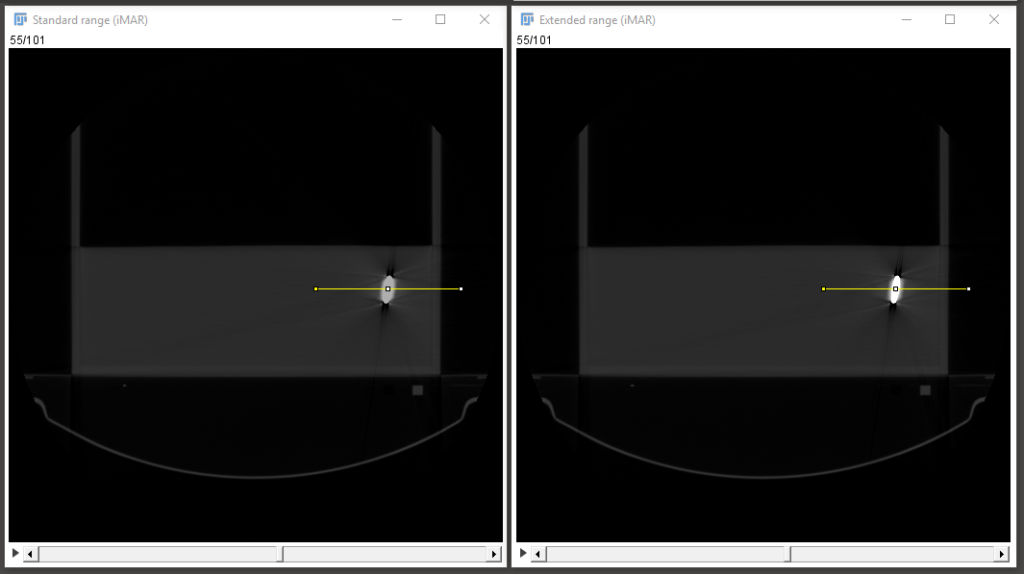Standard CT reconstruction data is stored using 12-bit unsigned integers (i.e. having possible values of 0 to 4095). These unsigned values are rescaled to a range encompassing -1024 through 3071 (using an offset, or intercept of -1024). However CT data can also be reconstructed using an extended scale, resulting in 16-bit unsigned integers (i.e. having possible values of 0 to 65535). This has implications for imaging of high density objects, such as metals, which cannot otherwise be differentiated on a standard CT number scale.
This effect is simply illustrated with the two examples below. A stack of coins (described by Kairn et al.) were imaged in a tub of water. CT data was reconstructed from a single acquisition using both a standard and extended CT scale; with the Siemens iMAR metal artefact reduction algorithm used. The minimum CT number in the extended CT scale dataset was set at -1024 HU. These slices shown below are presented using identical window settings (level = 2000, window = 6000).

The yellow lines in these images indicate the location of the profiles plotted below:
